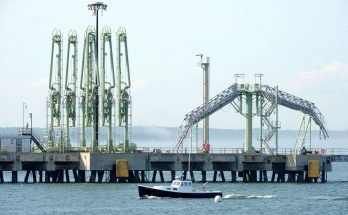The temperature calibration can be achieved in many different ways and with many degrees of precision. Much like any calibration, a standard has to be utilized. The criteria utilized in fever calibration may come in various forms but has to be certified with a precision that’s traceable to a national benchmark. Readings from such devices can be contrasted with less precise field temperature detectors and used to assess the viability of these devices or to carry out a temperature calibration.
Practical Temperature Calibration
The temperature calibration generally includes an ‘as found’ test to be certain that the temperature probe is inside the calibration tolerances. When a probe is discovered to be out of tolerance, it’s normally replaced with a fresh investigation that’s intolerance. Alternately, offsets to fix the out of tolerance condition could be made directly into the digital transmitter on the temperature sensor. The expense of this temperature probe warrants the cost of correcting the transmitter ought to be considered in deciding on the most viable method. In any circumstance, the fever calibration ought to be run within the specified range of the detector or its selection of application.
Instruments utilized in Temperature Calibration
To carry out a temperature calibration or Fluke Meter Calibration one requires a secure and flexible supply of temperature to create temperatures within the assortment of the device being calibrated. There are lots of approaches to do this. Professionals can offer a range of temperatures that are stable. Following a steady temperature is attained, an individual has to have a precise method to quantify this temperature and compare that measurement to the unit being examined. Precision thermometers (formerly branded ASL) could signal the temperature by a normal probe then the output signal in the test probe (immersed in precisely the exact same temperature bath or dry block) could be compared and listed at the temperature calibration document.

Here are 3 common procedures for calibrating temperature sensors:
Here’s a glance at these methods as well as the advantages and disadvantages of each.
Calibrating only the electronic equipment using a simulator
9171 Metrology Well Calibrator
Experts of the process:
It is fast. The electric settings are instantaneous and need no more stabilization times.
The calibration gear might be more mobile than the gear used in different techniques.
Calibrating both electronics and the detector in a dry-well
Within this technique, the dry-well is put to the desired test temperature along with the valve, meter and probe combined, is put in the well. The thermometer reading is contrasted to this scanning about the dry well’s built-in thermometer.
The true temperature is utilized.
System installation is easy as merely one device (the dry-well) can be utilized.
Calibrating both the electronics and the detector in a dry-well using a reference thermometer
Within this technique, a dry-well can be employed as a secure heat source along with the thermometer is contrasted against a more precise valve positioned within an adjacent hole at the well.
You’ve got more flexibility in fitting unit-under-test sizes.
Winding-up
There are three key procedures for calibrating temperature detectors, and every method has different pros and cons. In Conclusion, these approaches are:
Calibrating only the electronic equipment using a simulator — This approach is fast, but you will require another calibration process of the probe.
Temperature Calibration both the electronics and the detector at a dry-well using a reference thermometer — This process offers the best precision, but it’s more costly and complicated compared to the other two methods.




